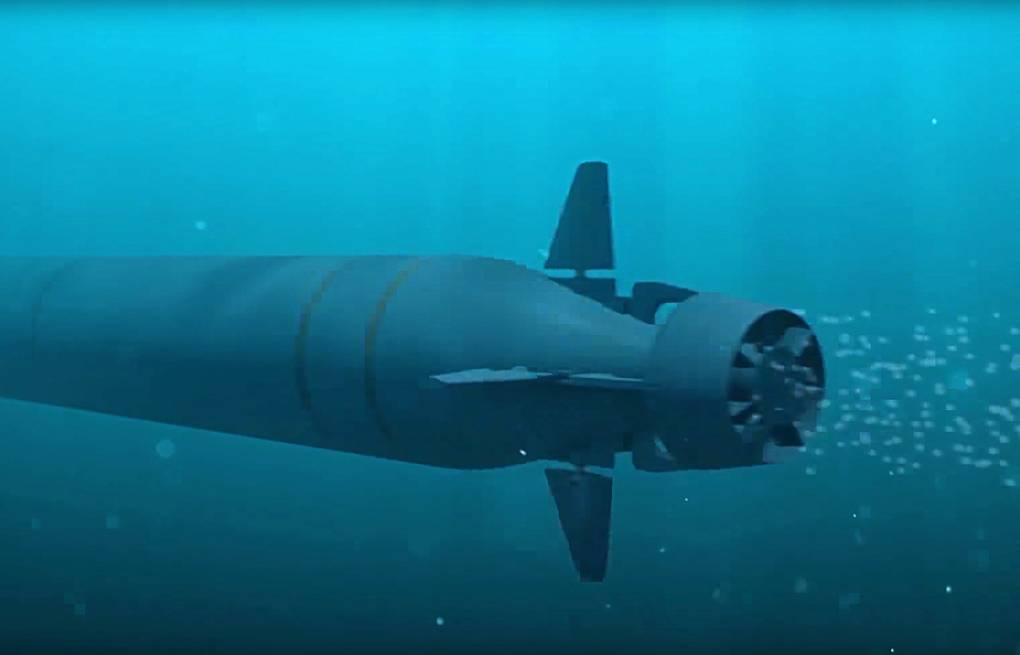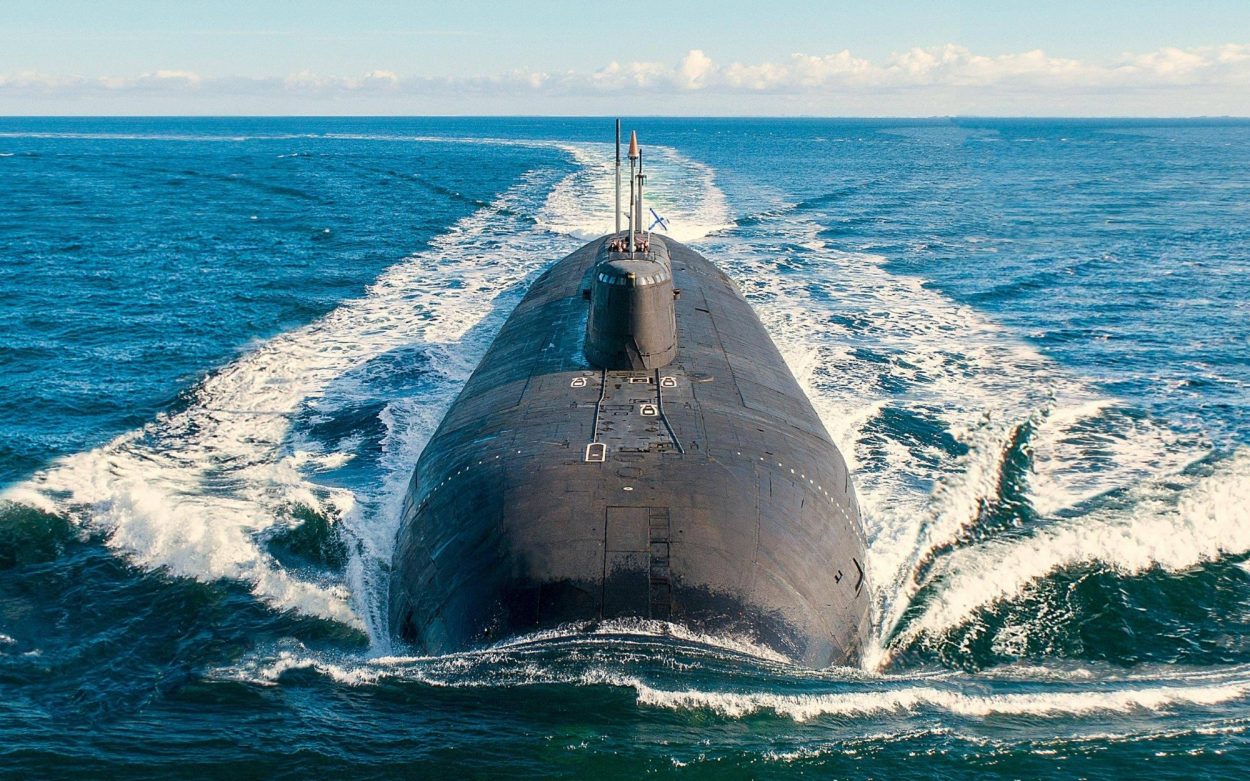OPED By Vijainder K Thakur
There are wild speculations in the West and on social media that the Russian special-purpose nuclear submarine K-329 Belgorod, deployed to the Arctic ocean recently, may test one of Russia’s newly developed superweapons — the Poseidon nuclear-powered undersea drone that features a two-megaton nuclear warhead.
Japan Eyes $279B In Defense Spending; Could Surpass Russia & India To Emerge 3rd Biggest Global Military Power
‘A Hell Of A Fighter’ – Why India’s Joint Collaboration With Egypt Failed To Develop A Supersonic Warplane – The Helwan 300?
Even more bizarre, Western media quotes unnamed defense sources as saying that it’s possible that Poseidon’s nuclear warhead would be detonated in the Black Sea to send a strong cease & desist message to Ukraine and NATO.
Besides Ukraine, other Black Sea coastal nations include Romania, Bulgaria, and Turkey.
The usual suspect, British tabloid The Sun, was responsible for first airing speculations; outlets like news.com.au jumped on the bandwagon, with no apparent fact-checking or analysis whatsoever!
The speculations surrounding Belgorod have absolutely no basis, to put it mildly. The initial leak about the Belgorod’s deployment by Italy’s La Repubblica in a September 28, 2022 report and the rabid speculations that followed about the intent of the deployment in The Sun hint at the complicity of US/NATO official(s) at some level.
The aim is to ratchet up the false Western narrative that Putin is a crazed leader who is itching for a nuclear war. The ultimate intent was to incite Western sympathizers in Russia to overthrow the current government.
In the following paragraphs, I will lay out the facts for you to prove my point. We have covered Belgorod’s deployment in an earlier news report, so here I will crisply cover background information essential for you to grasp my logic.
The Belgorod is an extensively modified Project 09852 (modified Oscar II) submarine repurposed to carry six Poseidon nuclear-armed underwater drones and a smaller submarine. The vessel was floated on April 23, 2019.
The Poseidon is one of several superweapons unveiled by Russian President Vladimir Putin in March 2018. Russia developed the superweapon in response to the deployment of US missile defense systems in Europe.
Poseidon Undersea Drone
The Poseidon is a remotely operated nuclear-powered undersea drone with an estimated range of 10,000 kilometers. It can cruise at 70 knots and dive to a depth of up to 1,000 meters.
It can destroy coastal infrastructure by creating a tsunami from the blast of its two-megaton warhead. The Poseidon provides a second nuclear strike option and is colloquially referred to as a doomsday weapon.

There is no evidence that the Poseidon has ever been tested over the intercontinental range. As such, its operational status is not known.
Belgorod Operational Status
The Project 09852 submarine Belgorod returned from its maiden deployment to the sea for shipbuilders’ sea trials on July 24, 2021. State tests were to follow, and the submarine was to be handed over to the Russian Navy by the end of 2022. Following induction, the submarine was to be deployed in the Pacific Ocean.
The Belgorod was commissioned into the Russian Navy in July 2022. At the time of its commissioning, it was reported that she would operate in an initial experimental role with the Northern Fleet before transferring to the Pacific. It should be noted that Belgorod’s deployment to the Arctic was planned months ago!
Why Russia Will Not To Test Poseidon Now
The are two good reasons why Russia would not test Poseidon under the current circumstances.
Firstly, Russia has renounced nuclear tests; it’s a signatory to the Nuclear Test Ban Treaty, so the question of detonating a Poseidon warhead doesn’t arise. The US & NATO have a history of reneging on international treaties, not Russia, which will not dissuade Western analysts from suggesting that Russia will readily destabilize the world by ignoring its treaty obligations.
Secondly, at this point, testing the Poseidon with or without a nuclear warhead would serve no purpose. A test failure with a nuclear detonation could pose an existential threat to Russia if the resulting radioactivity-laden Tsunami were directed towards Crimea!
A test failure sans a nuclear warhead would greatly embarrass Russia! Besides the embarrassment, it would cast doubts on the efficacy of Russia’s nuclear deterrent. Conceivably, it could prompt the US to consider a nuclear first strike on Russia!
Russian military leadership is known to be rabidly risk averse. It’s unthinkable that it will gamble with Russia’s existence. And no, Putin is not a madman! Arguably, he is the world leader with the sharpest intellect today, and the West knows as much, which is why it fears Putin.
Why Would Russia Deploy Belgorod Now?
Multi-Role Platform
Belgorod is a multi-role platform. According to independent defense analyst HI Sutton, the submarine is also equipped for covert seabed warfare missions, operating on behalf of Russia’s Main Directorate of Deep-Sea Research (GUGI).
Besides the six Poseidon drones, the submarine carries a nuclear-powered deep-diving midget submarine docked under the keel for seabed warfare, a DSRV rescue submarine on its back, and other extensive payload options, including self-contained nuclear power plants, regular torpedoes, and other submarine weapons.

The submarine could be deployed for seabed warfare, such as laying sensor networks on the seafloor or tapping internet cables. It could act as a mothership for smaller specialized submarines in such a role.
Russia plans to lay a network of sensors on the Arctic seabed for real-time tracking of the NATO submarines operating in northern waters. The sensor network is to be laid and maintained by nuclear-powered midget submarines.
It is possible that the Belgorod sailed out on an operational mission, but the mission could simply be laying sensors on the Arctic floor.
Dmitry Stefanovich, a research fellow at the International Security Centre with the Russian Academy of Sciences’ Institute of World Economy and International Relations, told Kommersant that the Belgorod might not even be carrying Poseidon torpedoes; it could well be carrying other underwater vehicles, including autonomous, remote-controlled as well as manned ones.
As such, the sub may have been deployed for surveillance or testing new unmanned underwater drones and other systems, as well as sabotage. He believes that notwithstanding its commissioning, it’s unlikely testing of the Belgorod’s internal systems has been completed. So the submarine may well have sailed out to validate its machinery!
Ironically, NATO, which is usually skeptical about the readiness of new Russian weapon systems for operational deployment, is now getting way ahead by projecting the sailing out of the submarine as a potential threat, raising alert levels, and stepping up monitoring.
Conclusion
It’s conceivable that the Belgorod has sailed out with its full complement of Poseidon underwater drones! In that case, Russia has deployed an essential component of its nuclear deterrent. It has added six thermonuclear warheads that the West has no defense against to its second strike capability.
The more capable the Russian deterrent, the less likely the chances of a US first strike would be. The Belgorod deployment is no different from the periodic deployment of an SSBN in peacetime.
The Belgorod deployment is no threat to the West. Undersea drones with nuclear warheads don’t enhance first-strike capability! So Western hysteria is not justified. However, the deployment does send a subtle message to the West – Don’t think about it!
It’s a message that the world must hope the US heeds because no one can doubt the US intent to dismember Russia, which dates back to WW2 when US generals advocated vanquishing Russia after Russia had defeated Nazi Germany on behalf of the world, losing 25 million Russian citizens!
- Vijainder K Thakur is a retired IAF Jaguar pilot. He is also an author, software architect, entrepreneur, and military analyst. VIEWS PERSONAL
- Reach out to the author at vkthakur (at) gmail.com
- Follow EurAsian Times on Google News




